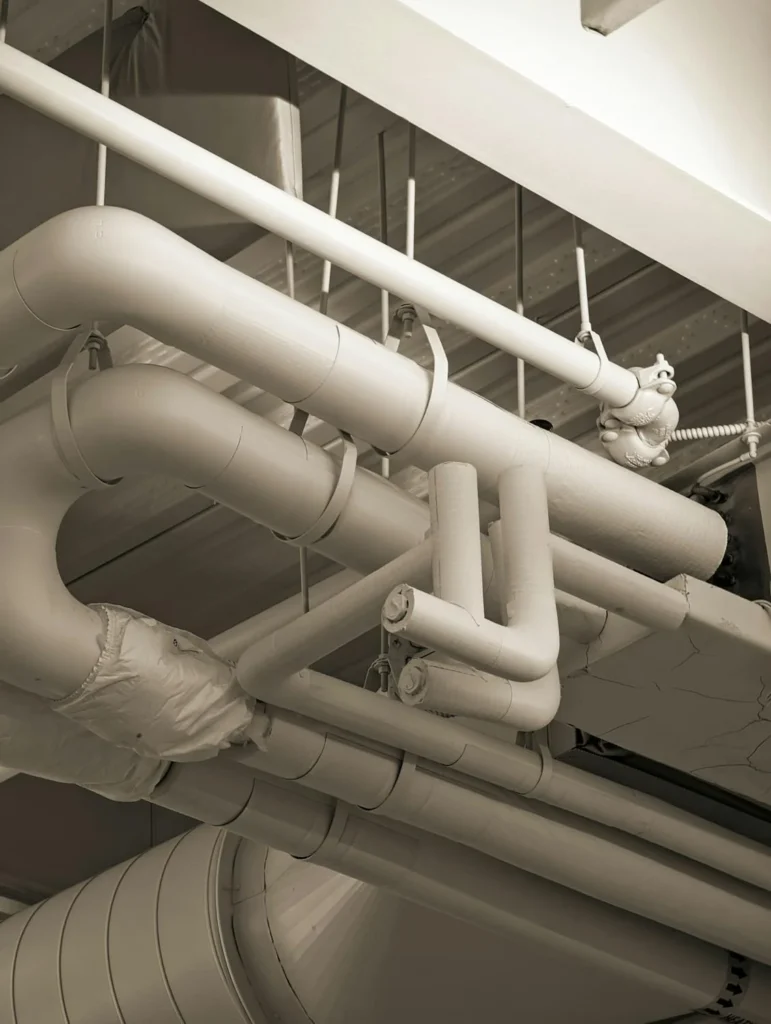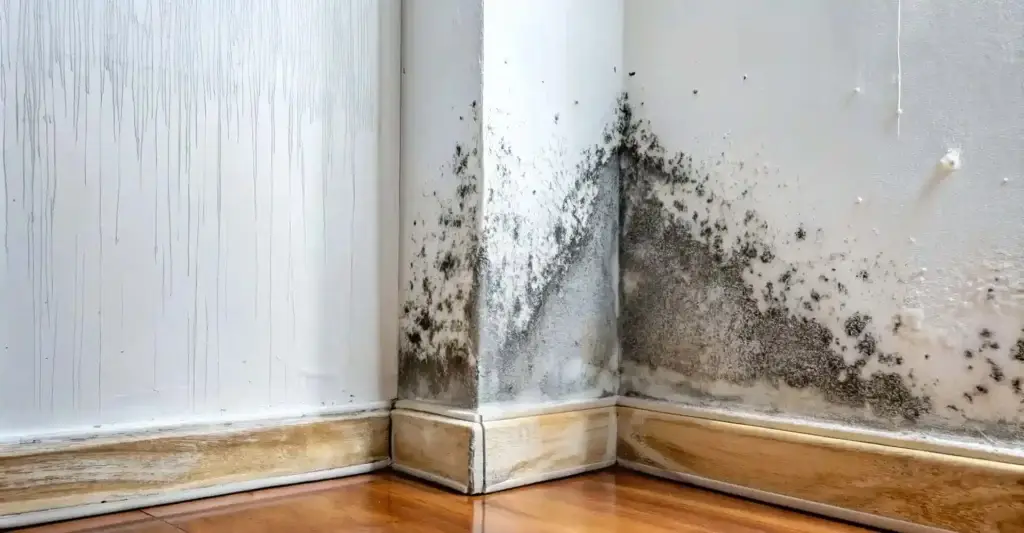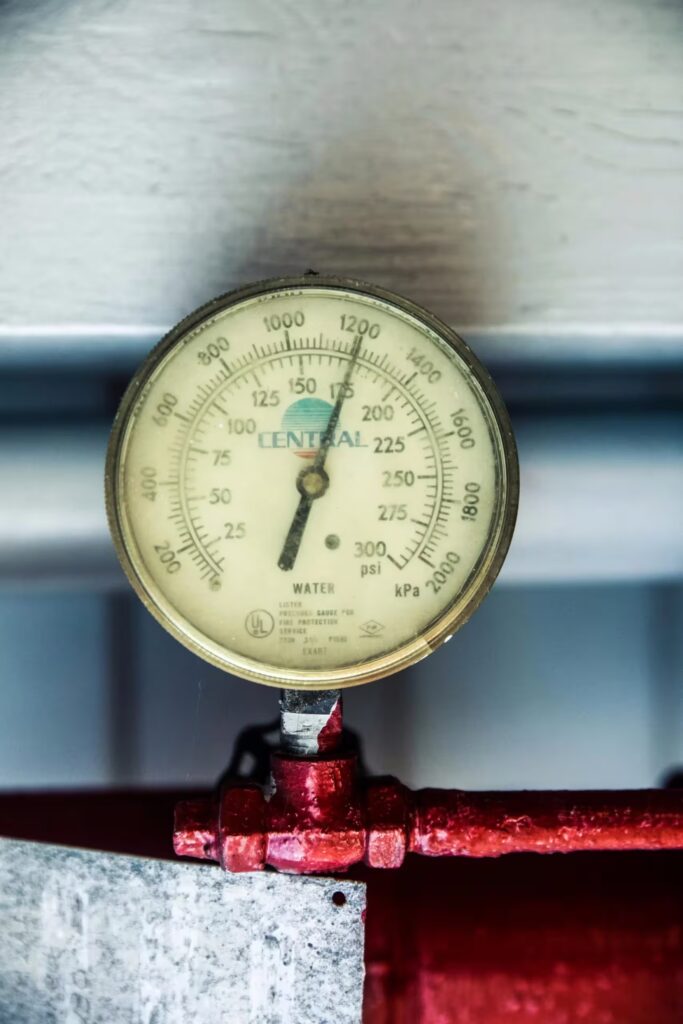If you’ve ever noticed white, powdery stains on brickwork, stone, or concrete, you’ve encountered efflorescence. This unsightly phenomenon occurs when water-soluble salts are drawn to the surface of a material and left behind as the water evaporates.
Efflorescence is particularly common in the UK due to the country’s wet and variable climate, where persistent rainfall and moisture contribute to the conditions necessary for salt deposits to form. While it does not usually pose a structural threat, efflorescence can be a sign of underlying moisture issues and can detract from the appearance of a property. Often the only way to deal with this issue is to have your building exterior cleaned.
How common is efflorescence in the UK?
With an average annual rainfall of 885mm, the UK’s climate creates the perfect conditions for efflorescence. Approximately 60% of UK buildings experience some form of efflorescence, particularly in regions with high humidity or frequent rain. New build properties are especially susceptible, with reports indicating that up to 80% of freshly constructed brick buildings show signs of efflorescence within the first year.
What causes efflorescence?
Efflorescence appears when three key conditions are met:
- The presence of soluble salts: These salts exist within building materials such as brick, cement, and mortar.
- Moisture penetration: Water dissolves the salts and allows them to move through the material.
- Evaporation: As moisture evaporates from the surface, it leaves behind crystallised salt deposits.
Common sources of moisture include:
- Rain and damp weather
- Groundwater rising through porous materials
- Condensation in poorly ventilated areas
- Water used during construction (e.g., in cement mixtures)
If any of these factors are controlled, the occurrence of efflorescence can be significantly reduced.
Where is efflorescence most likely to appear?
Efflorescence can form on various surfaces, including:
- Brick: Due to its porous nature, brick absorbs water easily, making it one of the most common materials affected by efflorescence.
- Concrete: Often contains soluble alkalis, particularly Portland cement, which increases susceptibility.
- Stone: Natural stones like limestone and sandstone can show efflorescence, especially when used in exterior settings.
- Plaster & mortar: If exposed to excessive moisture, these materials can also develop efflorescence stains.
Newly constructed buildings are particularly prone, as construction materials often contain residual moisture that can activate salt movement to the surface.
How to identify efflorescence
Efflorescence appears as a white or grey powdery deposit on the surface of a material. While it may resemble mould or staining, it can be distinguished in the following ways:
- Texture: Unlike mould, efflorescence is dry and powdery.
- Water Solubility: If the substance dissolves in water and disappears when wiped with a damp cloth, it is likely efflorescence.
- Salt test: If you suspect efflorescence, scrape some of the deposit into a glass of water. If it dissolves, it confirms the presence of salt.
How to prevent efflorescence
Prevention is key when dealing with efflorescence. Here are some of the most effective measures:
- Improve drainage: Ensure gutters and downspouts direct water away from the building foundation.
- Use water-repellent sealants: Applying a breathable sealant can help prevent moisture ingress without trapping water inside the material.
- Choose low-salt materials: Opt for construction materials with lower soluble salt content.
- Improve ventilation: Reducing condensation inside buildings can help limit efflorescence on interior walls.
- Proper construction techniques: Using appropriate flashing, waterproof barriers, and mortar joint finishing techniques can significantly reduce moisture penetration.
How to remove efflorescence
If efflorescence has already formed, there are several ways to remove it effectively:
- Brushing & dry cleaning: A dry, stiff-bristled brush can often remove fresh efflorescence. Avoid using wire brushes, as they can damage the surface.
- Pressure washing: A mild pressure wash can help remove salt deposits, but ensure the water does not saturate the material, which could lead to further efflorescence.
- Acid cleaning: For stubborn deposits, a diluted acid wash (such as a weak hydrochloric acid solution) can be effective. However, this should be used cautiously, as it may damage the surface and mortar joints.
- TORC system cleaning: For heritage buildings or delicate surfaces, the TORC system is the most effective and non-invasive method. It uses a fine granulate mixed with low-pressure water to gently remove efflorescence without harming the substrate.
Efflorescence and structural concerns
While efflorescence itself is not structurally harmful, it can indicate underlying moisture issues, such as:
- Rising damp
- Poor waterproofing
- Blocked drainage systems
If efflorescence persists despite cleaning, it is advisable to investigate potential water ingress problems and seek professional assessment.
Don’t ignore efflorescence
Efflorescence is a common issue in UK properties, particularly due to high humidity and frequent rainfall. While it does not directly weaken a building, it is an indicator of excessive moisture, which could lead to more serious problems like damp and mould if left untreated.
By understanding what causes efflorescence and implementing preventative measures, homeowners and property managers can maintain the aesthetic and structural integrity of their buildings.
Need professional assistance?
If you’re dealing with persistent efflorescence or suspect a moisture issue, our expert cleaning and restoration team can help. Contact us today for support.





















